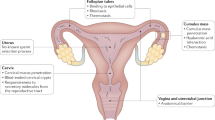Abstract
Background: A microchamber has been developed which allows motile sperm to swim from a central loading site to peripheral sidewells. The sidewells are designed such that oocytes may be placed within them for in vitro fertilization (IVF) or sperm may be harvested from them for use in standard IVF or micromanipulation. Because only motile sperm can reach the sidewells, the microchamber can select relatively high-quality sperm from a crude preparation. Moreover the steep walls of the sidewells create the potential to trap sperm.
Objective: The present study was under taken to compare sperm in the sidewells to those found in randomly sampled regions of microchamber after various periods of incubation.
Results: We find that the sidewells concentrate motile sperm and that a higher percentage of sperm removed from side-wells is acrosome reacted. Motile sperm from oligospermic patients can be harvested from microchamber sidewells for use in micromanipulation after loading the microchamber with unprocessed specimens. Results suggest that this microchamber could be used to enhance sperm:egg interaction in IVF or to harvest sperm for micromanipulation.
Similar content being viewed by others
References
Kanwar KC, Yanagimachi R, Lopata A: Effects of human seminal plasma on fertilizing capacity of human spermatozoa. Fertil Steril 1979;31:321–327.
Ashok A, Manglona A, Loughlin KR: Improvement in semen quality and sperm fertilizing ability after filtration through the L4 membrane: comparison of results with swim up technique. J Urol 1992;147:1539–1541
Harris SJ, Milligan MP, Masson GM, Dennis KJ: Improved separation of motile sperm in asthenospermia and its application to artificial insemination homologous (AIH). Fertil Steril 1981;36:219–221
Berger T, Marrs RP, Moyer DL: Comparison of techniques for selection of motile spermatozoa. Fertil Steril 1985;4:268–273
Gorus FK, Pipeleers DG: A rapid method for the fractionation of human spermatozoa according to their progressive motility. Fertil Steril 1981;35:662–665
Devroey P, Liu J, Nagy Z, Tournaye H, Silber SJ, Van Steirteghem AC: Normal fertilization of human oocytes after testicular sperm extraction and intracytoplasmic sperm injection. Fertil Steril 1985;62:639–641
Silber SJ, Devroey P, Nagy Z, Tournaye H, Van Steirteghem A: Micro-epididymal sperm aspiration with epididymal versus testicular biopsy spermatozoa. 10th Annual Meeting of the ESHRE 1994, abstr 111
Aitken RJ, Clarkson JS: Significance of reactive oxygen species and antioxidants in defining the efficacy of sperm preparation techniques. J Androl 1988;9:367–376
Fulgham DL, Alexander NJ: Spermatozoa washing and concentration techniques. Handbook of the Laboratory Diagnosis and Treatment of Infertility. BA Keel, Webster FL, CRC Press, 1990, pp. 193–211
Alvarez JG, Lasso JL, Blasco L, Nunez RC, Heyner S, Caballero PP, Storey BT: Centrifugation of human spermatozoa induces sublethal damage; Separation of human spermatozoa from seminal plasma by a dextran swim-up procedure without centrifugation extends their motile lifetime. Hum Reprod 1993;8:1087–1092
Gordon JW, Davis V, Kaplan P, Chen HL: An in vitro fertilization microchamber allows penetration of the hamster oocyte after insemination by unprocessed semen. Proc Am Fertil Soc 1994, Abstr P-056
Gordon JW, Chen HL: Penetration of hamster oocytes by human sperm in an in vitro fertilization microchamber following insemination with unprocessed semen. Fertil Steril 1995;64:437–440
Morales P, Cross NL: A new procedure for determining acrosomal status of very small numbers of human sperm. J Histochem Cytochem 1989;37:1291–1292
Cross NL, Morales P, Overstreet JW, Hanson FW: Two simple methods for detecting acrosome-reacted human sperm. Gamete Res 1986;18:213–226
Bruckner C, Alexander NJ: Evaluation of the acrosome: Immunological methods.In Human Spermatozoa in Assisted Reproduction, AA Acosta, TF Kruger (eds). Baltimore, Williams & Wilkins, 1990, pp 114–118
Yanagimachi R, Yanagimachi H, Roger BJ: The use of zona-free animal ova as a test-system for the assessment of the fertilizing capacity of human spermatozoa. Biol Reprod 1976;15:471–476
Johnson AR, Syms AJ, Lipsultz LI, Smith RG: Conditions influencing human sperm capacitation and penetration of zona-free hamster ova. Fertil Steril 1984;41:603–608
Author information
Authors and Affiliations
Rights and permissions
About this article
Cite this article
Lih, C.H., Obasaju, M., McCaffrey, C. et al. Development of a microchamber which spontaneously selects high-quality sperm for use in in vitro fertilization or micromanipulation. J Assist Reprod Genet 13, 657–662 (1996). https://doi.org/10.1007/BF02069645
Received:
Accepted:
Issue Date:
DOI: https://doi.org/10.1007/BF02069645




